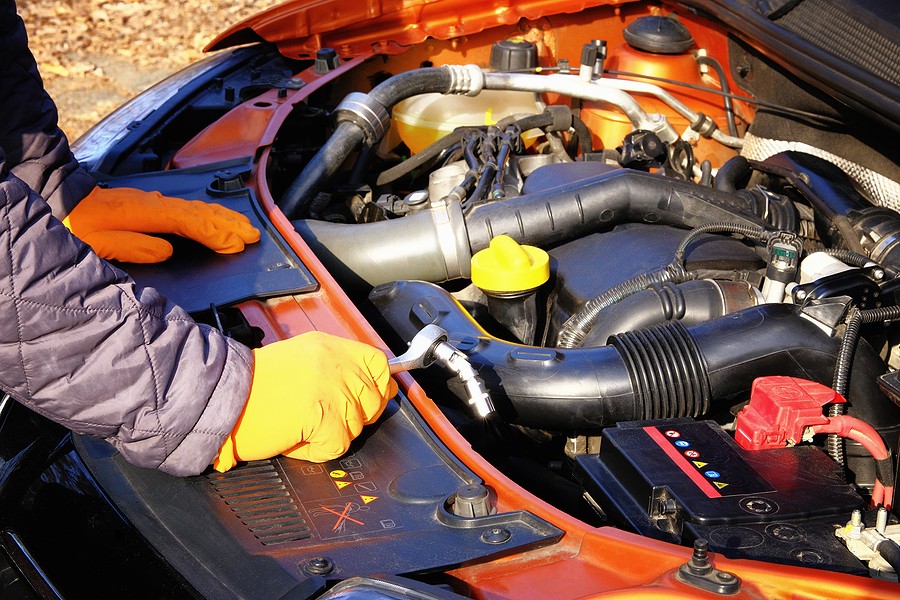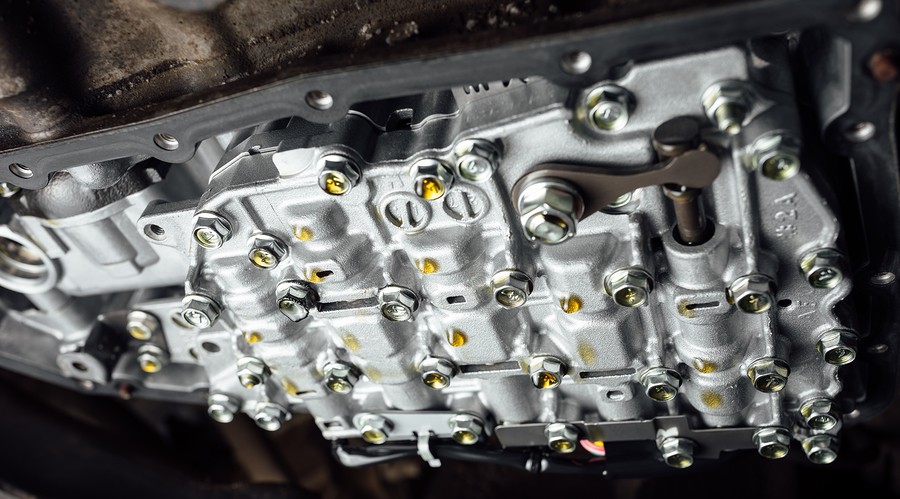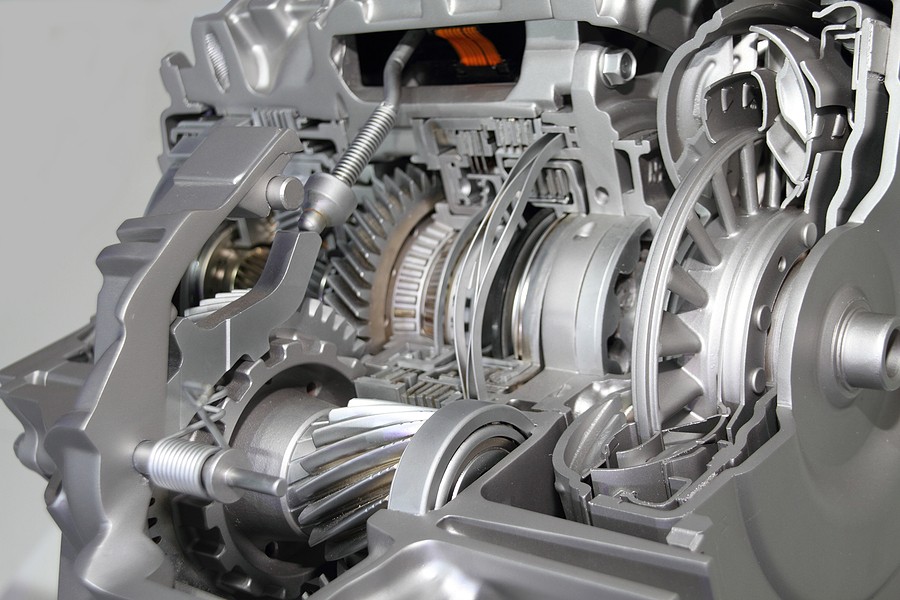The CVT transmission is an automatic transmission that can change its gear ratio to vehicle speed. This transmission type is becoming more popular due to its high performance and ability to improve fuel economy. Unfortunately, although this transmission is very high-tech, it can sometimes go bad.
If you detected issues with a bad CVT transmission, you save yourself thousands of dollars on repair. Therefore, every driver needs to familiarize himself with the most common symptoms of a bad CVT transmission.
This article summarizes the most common symptoms of a broken CVT transmission. This way, you can know if you have a bad CVT and get it repaired right away.
Let's read on “How To Know If You Have A Bad Cvt Transmission?”
What is a CVT transmission?
CVT stands for Continuously Variable Transmissions. An automatic transmission can change its gear ratio in response to vehicle speed. This transmission type is becoming more popular due to its high performance and ability to improve fuel economy. Dutchman Van Doorne patented this new technology in the 1940s.
Since then, many automakers have developed their versions of CVT transmissions. For example, Nissan uses “Xtronic” for its CVT transmission. Another popular name is Mitsubishi's “ECVT.”
The CVT has a belt or chain that connects two variable-diameter pulleys to a variator. The car's input shaft is linked to the smaller pulley, while the larger pulley is connected to the transmission's output shaft.
The two variable-diameter pulleys are placed inside a metal housing to form one piece. As engine rpm increases, the speed at which each pulley spins causes the belt or chain to move faster.
The benefits
There are many benefits of a CVT. One of the most important ones is its ability to improve fuel economy since it provides a wider range of gear ratios than a traditional automatic or manual transmission. This translates into fewer pumping losses, resulting in better fuel economy and performance at high vehicle speeds.
How to know if you have a bad CVT transmission?
Continuously Variable Transmission provides high fuel economy and smooth operation. However, due to the high-tech nature of this gearbox, it can sometimes go completely bad and start giving you problems.
Here are the 10 common symptoms of a bad CVT transmission:
1. Slipping transmission
This is one of the most common symptoms of a bad CVT. This issue can be caused by the deterioration of various CVT parts, such as the rubber belt or metal chain that links two pulleys inside a CVT.
2. Grinding noise from the transmission
This is another symptom of a bad CVT. When your car starts to make weird noises, it usually means you have a problem with your car's transmission. In some cases, this may be a sign of a bad CVT.
3. Hard downshifting while braking
If you start hearing grinding or snapping sounds when you apply the brakes, there is probably something wrong with your car's transmission. This can be a sign of a bad CVT, 4-speed automatic transmission, or 5-speed manual gearbox, depending on the vehicle model and manufacturing year.
4. Unpredictable acceleration
Since CVT provides different gear ratios dependent on vehicle speed, all cars with this type of transmission will experience a sudden loss of power if the belt or chain inside the transmission snaps.
5. Poor fuel economy
Since a bad CVT causes your car to shift up and down, you can expect its fuel economy to be 3-4 times worse than normal driving conditions.
6. Slipping out of overdrive gear
If your car doesn't shift on its own into “overdrive” mode, it means there's something wrong with your car's internal components. A broken CVT is one of these components, which can cause it not to shift automatically into overdrive at certain speeds.
7. Emissions problems
If you keep experiencing similar problems repeatedly, it's probably time to take your car in for an emission test. This will help you decide if there is something wrong with the CVT since this type of transmission is known to affect your vehicle's emissions output when it fails. 8. A strange smell when accelerating
This can be one of the symptoms of a bad CVT. If you start smelling burnt rubber, this means that some belt inside the transmission has dropped in temperature several degrees below operating temperature.
9. Slow acceleration
You may experience slow acceleration if the pulley becomes seized or dry due to lack of lubrication or excessive heat buildup in its bearings or on its surface. You may also get slow acceleration if the belt is slipping or the clutch pack becomes worn, allowing too much slippage.
10. Engine revs high, and transmission does not shift down
This is another common symptom of a bad CVT. You may notice that your engine RPM goes high during regular driving even though you're only going around 30-40 mph. This usually happens when you accelerate from a stop when the transmission fails to downshift.

How to diagnose your car for a broken CVT transmission?
It's not enough to rely on the previously mentioned symptoms to say that you're dealing with a bad CVT transmission. Instead, you'll need to perform a thorough inspection to confirm the culprit.
You can easily reach out to your mechanic to confirm the issue. But since diagnosing a bad CVT transmission is not too complicated, you might be able to do it yourself by following these steps:
1. Check if your car has a CVT
Unfortunately, not all cars have a CVT, so before you start inspecting the transmission, ensure that the symptoms you're experiencing are related to this type of transmission. If there is no CVT in your car, it's probably a different car problem, such as being low on power or having trouble accelerating.
2. Check if your engine runs smoothly
There may be something wrong with the timing belt inside your car's engine if it does not run smoothly when you accelerate from an idle position. In many cases, this will be caused by a bad timing belt and not necessarily a broken CVT, so don't jump to conclusions just yet.
3. Listen for odd noises while accelerating
If weird sounds are coming from under your hood when you press down on the gas pedal, this usually means that there is some problem with the CVT since this type of transmission is known to make weird noises when it fails.
4. Check if your car skips gears
If you perform a test drive and notice that your car's RPM goes high even though you don't press down on the gas pedal, this means that your car shifts up to higher gears but doesn't actually “rev” up – there is too much pressure on one of its belts or chains. Again, this can be a symptom of a damaged CVT.
5. Perform a fluid leak test
You may notice a puddle of strange-smelling liquid under your car after driving it for 30 minutes to an hour. If so, check out the transmission drain plug and see if there is a leak or any fluid has come out of it. If this is the case, your car probably has a broken CVT.
6. Heat test
If you cannot perform the previous steps (or they do not reveal anything), you may need to heat the transmission by driving it around for 30 minutes to an hour. Once the transmission reaches a certain temperature, press down on the gas pedal and see if your RPM goes high. There is a problem with one of its parts if it does, and it's likely a bad CVT.
7. Check the dipstick for a burnt smell
After driving around for 30 minutes to an hour, open the hood and check the transmission fluid dipstick for strange smells. If it smells burnt, this might signify a broken CVT.
8. Use a stethoscope or an oscilloscope
If you have access to diagnostic equipment such as a stethoscope or an oscilloscope, you can use it to test your car's electrical system for abnormalities. By touching the two probes of your device to different parts of your car's wiring system, you can check if there are any issues in the car's electrical circuit. If it reveals problems with the power supply, this is another possible symptom of a broken CVT.
9. Do some research online
If you do not have access to diagnostic equipment or if your car does not have a CVT, you can research the symptoms of failed transmissions online. There are many forums where people post pictures and videos of their cars' engine bays after being diagnosed with this type of failure. You might be able to find out what exactly is wrong with your car by looking at these pictures and videos.
10. Ask your mechanic about it
If you have a good relationship with your car's mechanic, you can always ask him to diagnose your car for a broken CVT. Even if he has not worked on this type of transmission before, he may still be able to determine what is wrong with it by asking you a few questions and closely looking at your car's engine bay.

The common causes of a broken CVT transmission and how they can be fixed
Several different factors can cause a failed transmission, and most of these can be fixed with the help of a good mechanic. Here are the most common causes for this type of failure and what you can do to prevent it from happening.
Leaking fluids
As with any other type of car transmission, the CVT has lots of fluids that keep it working properly. The most important ones are the engine oil, transmission fluid, and coolant. You need to regularly check these fluids and ensure they are at their proper levels. Otherwise, you increase the chances of damaging one or more gears in your car's powertrain.
Misalignment
Another common cause for a failed CVT is misalignment. If this type of problem is not fixed soon after it occurs, it can cause serious damage to your car's powertrain. This usually happens if something falls under the vehicle (such as a rock) and obstructs part of its drive system, which forces other parts to take extra stress to operate normally or if your car hits a pothole.
Incorrectly installed parts
If you have the wrong transmission fluid or oil in your car, their components can become damaged and cause internal leaks that lead to a broken CVT. You need to check your engine's manual for information about the required types of these fluids and use them accordingly. The same rule goes with all other components related to this type of transmission system.
Bad timing belt or chain
A broken timing belt or chain is another common reason a CVT fails. This usually happens if the engine overheats, which warps one of its belts or chains, which then breaks. Engine overheating usually happens because there is either too little (or none at all) cooling fluid in the car's radiator or its cooling system is not working properly.
Clogged filter
A clogged filter is another possible cause of a failed CVT. Finally, if you have never changed or cleaned your car's transmission fluid, it can get very dirty over time. This dirt accumulates inside the transmission and can damage some of its gears, leading to complete failure.
Bad coupling
If your CVT's coupling starts failing, it will likely result in a broken transmission system. There are two types of couplings – hydraulic and pneumatic ones. The former uses oil pressure to push the input and output shafts together, while the latter uses pressurized air. Each type has its own set of problems leading to a broken CVT.

How To Know If You Have A Bad CVT Transmission? Conclusion
If you're unsure if your car has a bad CVT, certain symptoms are to look for. For example, if the transmission fluid leaks or smells burnt, something is likely wrong with the system.
Other signs include misaligned gears and internal leaks within the engine bay. Again, the best way to diagnose these problems is by taking pictures of what you see in your engine bay (especially close-ups) and showing them to someone specializing in this type of problem, such as an experienced mechanic or automotive specialist.



